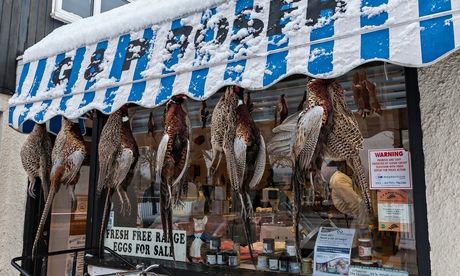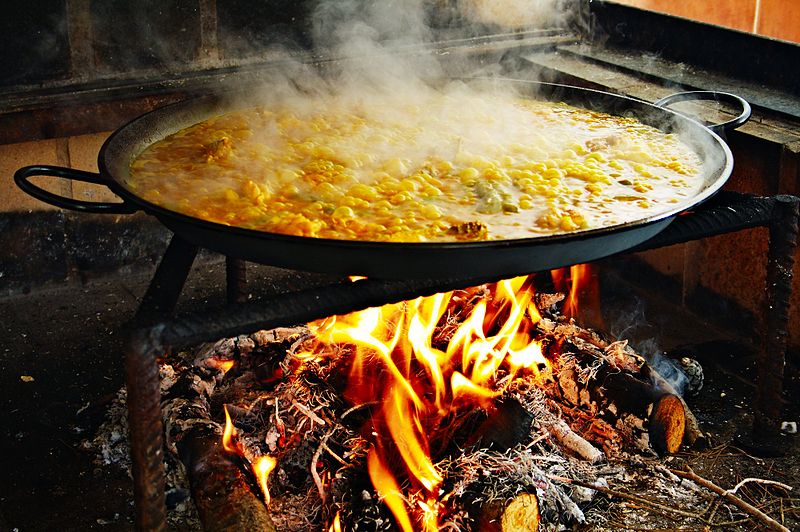This is narrow-minded, petty, xenophobic politics at its worst, where it seems that common sense an tolerance is thrown out the window. Infrastructure is collapsing and seems to be held together with duct tape and prayer, health care is suffering, companies are leaving the province because of the stupid, draconian language policies and this is what the fucking morons keep hammering on. Shit like this makes me happy I’m no longer living there to have to deal with it and doesn’t make it attractive for me to want to come back.
Day: February 25, 2014
Quote of the day
How the tabby got its stripes
Pussycat love
We have a Reeniepoodle
Frack, baby, frack! But not here. Ohhh, how the irony is palpable.
Sometimes, the hypocrisy expressed in real life is so sublimely rich that one could never hope to construct a similar scenario out of pure imagination. Meet Rex Tillerson, the CEO of oil and gas superstar ExxonMobil Corporation—the largest natural gas producer in these United States of America—and a newly emerging giant in the world of exquisite hypocrisy.
A key and critical function of Mr. Tillerson’s day job is to do all he can to protect and nurture the process of hydraulic fracturing—aka ‘fracking’—so that his company can continue to rack in billions via the production and sale of natural gas. Indeed, so committed is Rex to the process of fracking that he has loudly lashed out at those who criticize and seek to regulate hydraulic fracturing, suggesting that such efforts are a very bad idea, indeed. According to Tillerson, “This type of dysfunctional regulation is holding back the American economic recovery, growth, and global competitiveness.”
Thus, according to Rex Tillerson, nobody should have much of a reason to be disturbed or concerned when ExxonMobil comes knocking on your door to deliver the news that fracking is about to become a part of your daily life…unless, or course, you happen to live in Mr. Tillerson’s neighborhood. In that case, the rules are, apparently, very, very different.
You see, while Tillerson believes that the inevitable noise pollution that accompanies the fracking process—not to mention the potential for water contamination and other dangerous side-effects even when it is done safely (and some would strenuously argue that it is not possible to frack safely)— is of no real significance when it affects someone else’s neighborhood, he surely thinks it to be a pretty big deal when someone dares to get involved in fracking in Rex Tillerson’s neighborhood.
So much is this the case that Tillerson—ExxonMobil CEO and proud proponent of fracking as a key to both America’s and his company’s great energy future—has joined a lawsuit seeking to shut down a fracking project near Mr. and Mrs. Tillerson’s Texas ranch.
Why?
Because the water tower being built next to Tillerson’s house that will supply the water to the near-by fracking site, means the arrival of loud trucks, an ugly tower next door, and the general unpleasantness that will interfere with the quality of his life and the real estate value of his sizeable ranch.
Making this all the more entertaining is the content of the lawsuit which, in an attempt to get rid of the water tower, goes to great effort to lay out the problems experienced by those who are subjected to the fracking process—problems that Tillerson has always been quick to dismiss when his company picks a location that is not in his own neighborhood. Of course, none of the concerns set forth in his lawsuit ever seemed to trouble Mr. Tillerson when these issues were relevant to someone else’s home and quality of life—particularly if that ‘someone else’ lacked the resources to challenge the practices in court as Mr. Tillerson has elected to do.
The Wall Street Journal, says it all quite nicely—
“BARTONVILLE, Texas—One evening last November, a tall, white-haired man turned up at a Town Council meeting to protest construction of a water tower near his home in this wealthy community outside Dallas.
The man was Rex Tillerson, chairman and chief executive of Exxon Mobil Corp.
He and his neighbors had filed suit to block the tower, saying it is illegal and would create “a noise nuisance and traffic hazards,” in part because it would provide water for use in hydraulic fracturing. Fracking, which requires heavy trucks to haul and pump massive amounts of water, unlocks oil and gas from dense rock and has helped touch off a surge in U.S. energy output.
It also is a core part of Exxon’s business.”
Oops.
Making this even more deliciously enjoyable is the name of the lead plaintiffs in the case.
That would be Mr. and Mrs. Dick Armey…as in former GOP House Majority Leader Dick Armey who is also the former Chairman of FreedomWorks Dick Armey. FreedomWorks is, of course, the well financed (thanks to the Koch Brothers) Tea Party organization that has been been a vocal and avid proponent of fracking.
If anyone has a better nominee than Rex Tillerson for this month’s Hypocrite Hall of Fame I’d like to know who it is. In my mind, Tillerson now stands tall not only as a giant of the natural gas and oil industry but has managed to scale the loftiest of heights where he shall breathe that rarest of air inhaled only by a very special breed—corporate giants who will gladly profit from your misfortune and misery so long as what they peddle to you does not impinge on their own fine quality of life. Way to go Rex. I’m sure you can expect one hell of a great stock option bonus in your Christmas stocking this year.
Source: Forbes [http://www.forbes.com/sites/rickungar/2014/02/22/exxon-ceo-profits-huge-as-americas-largest-natural-gas-producer-but-frack-it-in-his-own-backyard-and-he-sues/]
Emphasis mine.
This makes me really, really angry
Should meat be displayed in butcher shop windows?

Over the weekend, a Suffolk petition triumphed, as JBS Family Butchers removed the meat hanging in its window display. The shop, in Sudbury’s Borehamgate precinct, followed the centuries-old tradition of displaying its wares in the window until it became the target of a letter campaign in the Suffolk Free Press.
“I, too, have been disgusted at the needless display of multiple mutilated carcasses on display,” wrote Ben Mowles from Great Cornard, who claimed he had been forced to suspend trips with his 12-year-old daughter to the nearby sweet shop because he would “rather not look at bloody severed pigs’ heads when buying sweets.”
It is a stark image. The father shielding his daughter’s eyes as he rushes her past the “mutilated carcasses” – which show the signs of provenance, the story of where the meat came from. He protects her from the reality of the chicken that goes into chicken nuggets, the beef that goes into beef burgers, the pork that goes into sausages. And he rushes her to Marimba sweet shop to find solace in a bar of chocolate instead.
Roger Kelsey, chief executive of the National Federation of Meat & Food Traders, explains that butchers’ windows have been the subject of investigation in the past. There are regulations surrounding the hygiene of hanging fur and feather alongside pre-prepared meat. “But this is different,” Kelsey says. “This is public opinion, branding butchers’ windows too gruesome.”
At butchers M Feller Son & Daughter in Oxford, it is quite a different story. Far from hiding his produce behind the counter, Michael Feller hangs it outside the shop to attract custom. There are often woodcock, pheasants, wild boar and even whole Père David’s deer on display. “We do have complaints,” says Feller, “but the reaction is an overwhelmingly good one – particularly at Christmas, where the window is a real draw. It is important people remember where their meat comes from,” says Feller, whose grandchildren recently joined the family business.
“The problem is that supermarkets tell us what cuts we’re allowed to eat. They wrap it and package it, and people forget that pork loin ever even came from a pig. My customers often come here for sweetbreads or testicles and other interesting cuts, but as soon as you start to target independent butchers, all this will disappear.”
Richard Balson, manager of Dorset butchers RJ Balson & Sons, expresses dismay at the petition. “The people kicking up a fuss about this man have gone soft. They’ve lost touch with reality,” he says. “When our family business was founded in 1515, the animals would have been walked into the middle of the towns, where they’d be slaughtered in front of everyone,” he says. “I appreciate that it’s a completely different world that we live in now. But this is over the top – it’s the minority kicking up a fuss, and the minority have too much power.”
Danny Lidgate, from Holland Park butchers, agrees that the petition is based on a minority opinion, but it’s one he is willing to listen to. “There’s always going to be 5-10% of the people who take offence. They’re going to be the ones who are most vocal about it,” he says. Lidgate has decided not to hang carcasses in his window. Instead, he displays cuts of meat, alongside roses hand-carved out of animal fat and seasonal vegetables.
“I want people to think ‘look at those lovely lamb chops’ – not ‘oh my goodness, there’s a whole pig dangling in the window’. Lots of art galleries purposefully display shocking work to generate a reaction. Sometimes it’s a good reaction, sometimes it’s bad. But either way, it provokes some sort of reaction – and that’s what lots of people choose to do in butchers’ windows.”
In Framlingham, 30 miles north-east of the Borehamgate precinct, butcher John Hutton shares Lidgate’s opinion. Hutton is proud of his window display – but admits that he would draw the line at a whole pig’s head. “A good old rib of beef is a lovely thing to look at,” he says. “But a pig’s head … I don’t know, it might offend more than please.”
His reasoning is based purely on aesthetics, and is certainly not through any attempt to obscure the reality of where the meat comes from. In fact, his meat delivery arrives in a van from the abattoir round the time that children are walking back from school, past the butchers. “They’re not squeamish at all,” he says. “The whole pig carcasses come off the back of the lorry, and it doesn’t seem to bother them in the slightest. If anything, they’re intrigued, and their parents like it, because they know they’re buying meat cut from the whole carcass.”
Back in the Borehamgate precinct, Richard Nicholson, the assistant manager at JBS Family Butchers, is overwhelmed by the public support. The butcher’s window was a topic of debate on both Radio Suffolk and Radio Norfolk. The butchers has since been inundated with phone calls from people encouraging the owners to put the meat back in the windows. “Ultimately we’re just a small shop. Our priority is to do what’s right for the business,” Nicholson says. “We’re leaving it down to the public to decide – if they think that’s how a butcher’s window should look, then we’ll put the display back. If not, then we’ll keep it down.”
Emphasis, mine. People need to realize that meat doesn’t come in a nice plastic-wrapped tray from Tesco. Your steak goes MOOOOOO, your bacon goes OINK and your chicken breast is a stupid, smelly bird that goes CLUCK. These are not mutilated carcasses. Show some respect for the food you’re eating, for f’n sake.
Wikipaella on mission to save rice dish from being lost in translation

Valencian trio hopes site brings traditional recipes to masses and rescues paella from further bastardisation by Jamie Oliver et al
Horrified by chefs making paella with ingredients including poached eggs and avocados, three men from Spain’s Valencian region have banded together to fight what they call the increasing “prostitution” of one of the country’s most emblematic dishes. Wikipaella aims to help “police” paella around the world, said co-founder Guillermo Navarro. “It’s a dish that’s really trendy these days. And there’s lots of people taking advantage of it and selling what they call authentic, traditional or Spanish paella.”
Time spent in the UK and the US gave Navarro a first-hand experience of how a dish treasured by his family for generations was losing its identity. “It’s like no, amigo, no,” he said, recalling some of the paellas he had eaten outside of Spain.
Particularly egregious to him was the slew of UK chefs who add chorizo to their recipes. “If Jamie Oliver wants to make his own version of paella, well that’s good,” Navarro said. “But don’t present as something authentic or traditional, because its not. Imagine if we said that we were making typical British fish and chips and we were putting oranges in it?”
Navarro had thought that it was just a matter of misinformation outside of Spain. But the problem persisted when he moved to Madrid. “In Madrid, 90% of the paellas that you eat can’t be compared to real paella.”
It was from this frustration – shared by many from Spain’s Valencian region – that Wikipaella was born. “It’s a citizen’s response to this problem,” said Navarro. “They’re pulling the wool over our eyes, we’re going to try and tell the people this.”
Launched last week, the site aims to be a portal into the world of authentic paella and other traditional rice dishes of the region; whether through certifying restaurants that serve the real deal, sharing recipes or answering the public’s questions.
One of Wikipaella’s first steps was to create a definitive list of what can be allowed in an authentic Valencian paella, some feat considering that each community in the region has their own take on the rice dish. After analysis of 170 traditional recipes, it was decided: yes to ingredients ranging from snails to rabbit and artichokes; but no to everything else – especially the artificial food colouring often used instead of saffron.
The site will be a place where paella fans – Spaniards and foreigners alike – can come together and share their thoughts on what makes the dish authentic, said Navarro. He is hoping to have the English version of the site up and running by this Friday. “Our objective is to have the majority of people know what an authentic paella from our region is,” he said. “We want it to be like pizza – where people can add in whatever ingredients they want, but that they know what a traditional pizza is.”
His team is not alone in taking paella seriously. In Benidorm, the Saint Anthony Catholic University recently announced it would be launching what it said was the world’s first Masters in rice and paella dishes of the Mediterranean.
I guess I’ll just stick to making non-paella paella, because I happen to like chorizo :)






